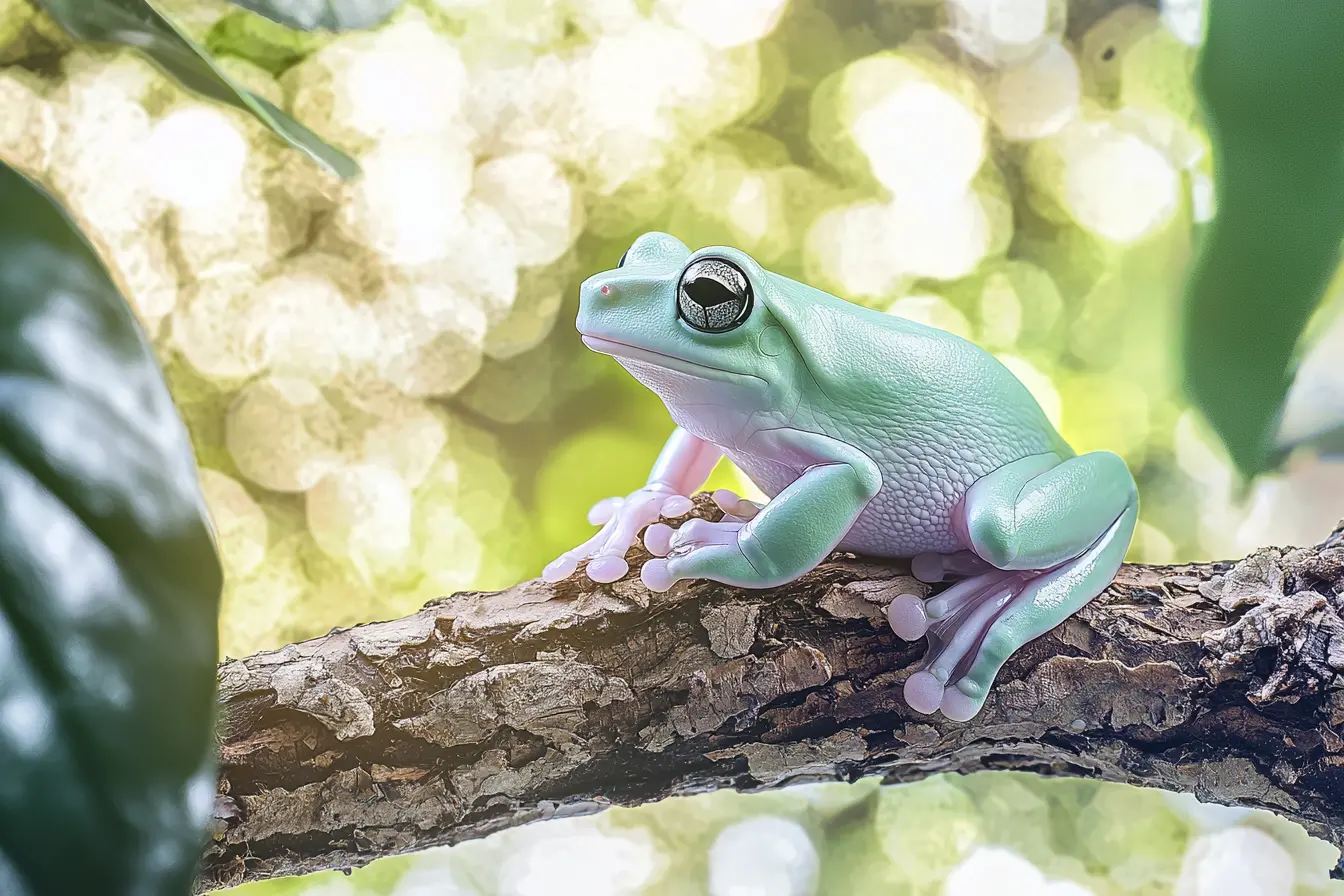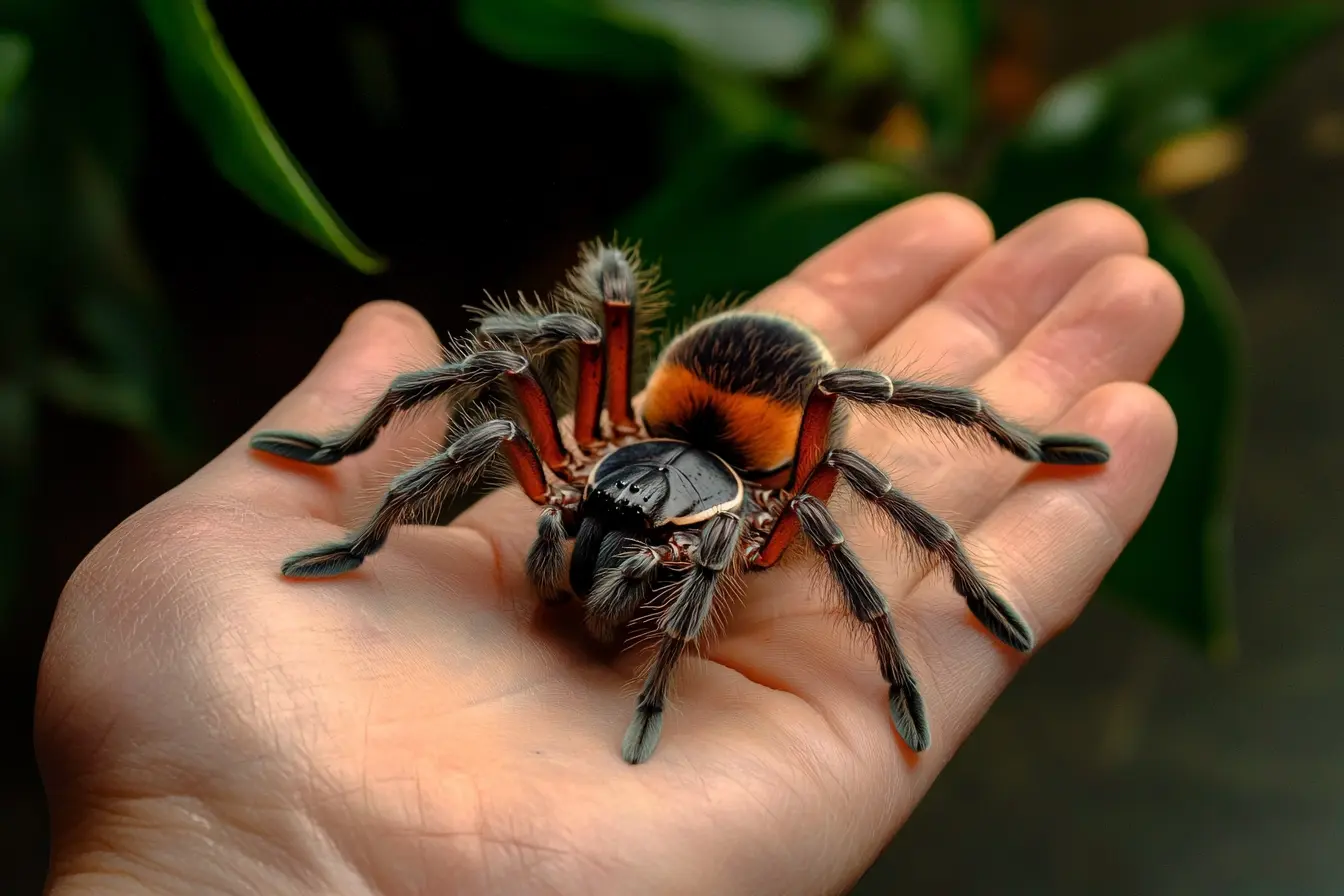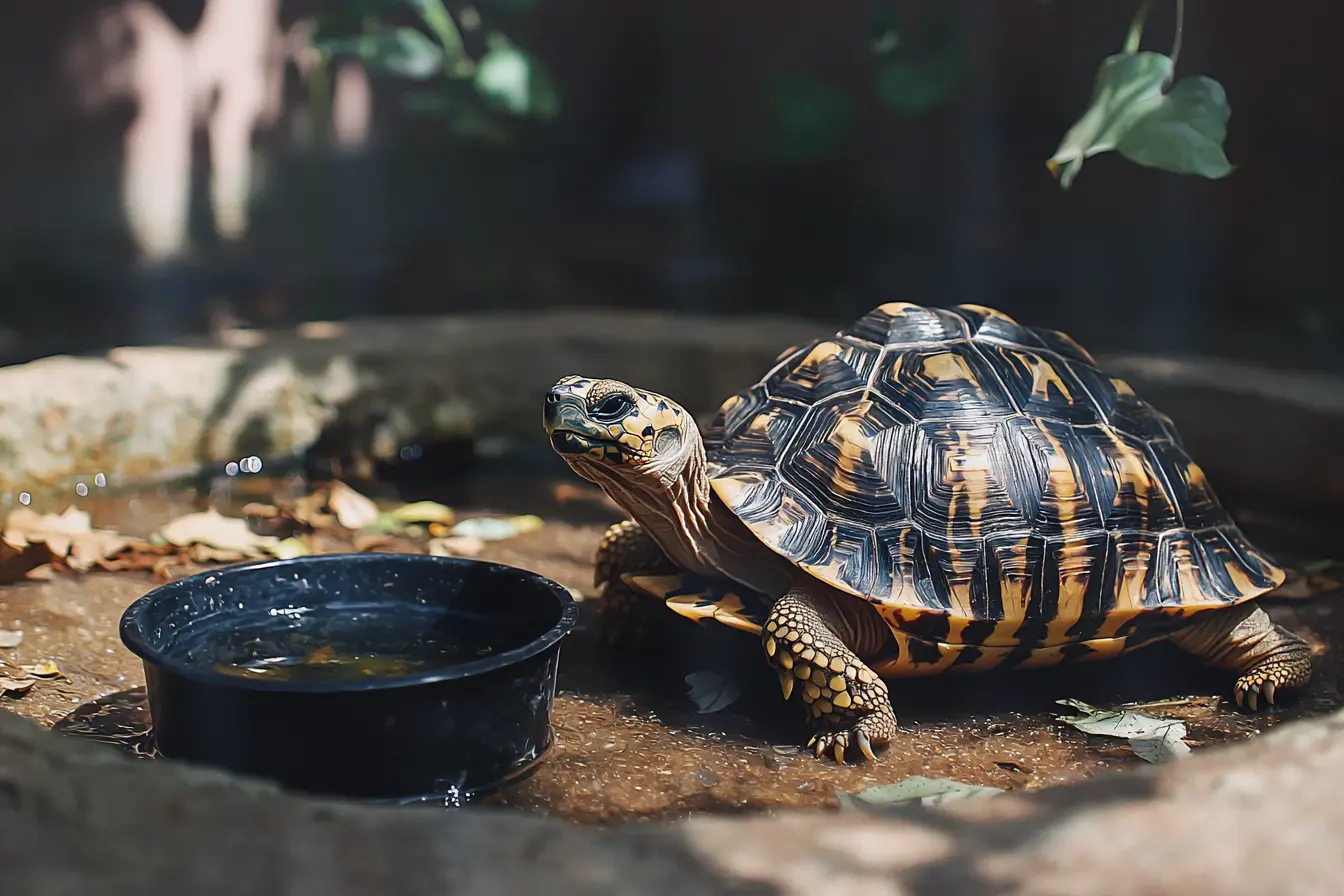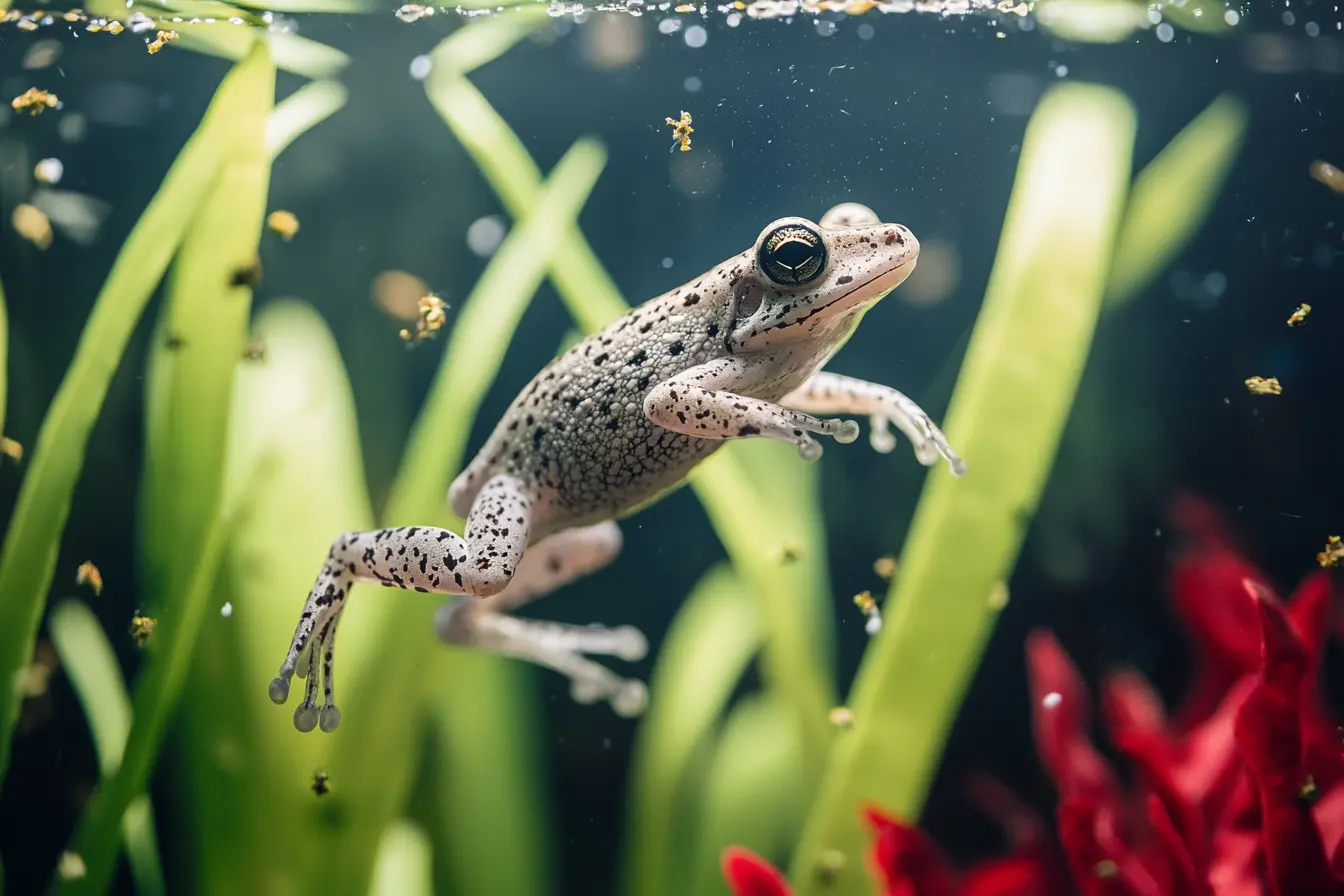
The Complete Guide to Keeping a White’s Tree Frog
White’s Tree Frogs (Litoria caerulea), also known as the Dumpy Tree Frog, are one of the most popular pet amphibians in the UK. Their calm temperament, charming expressions, and ease of care make them a great choice for both beginners and experienced reptile keepers.
If you’re considering getting a White’s Tree Frog, this guide will cover everything you need to know about their care, habitat, feeding, and health.
About White’s Tree Frogs
Native to Australia, New Guinea, and Indonesia, White’s Tree Frogs are arboreal (tree-dwelling) amphibians that grow to around 7–11 cm (3–4.5 inches) in length. They are known for their docile nature, large round eyes, and slightly “smiling” appearance.
Unlike many other frog species, they are relatively hardy and can tolerate a range of conditions, making them ideal for beginners.
Lifespan
With proper care, White’s Tree Frogs can live 10–15 years, with some individuals reaching 20 years.
Personality
- Calm and easy to handle (for a frog).
- Can recognise their owner and may even learn to take food from tweezers.
- Not very active. They spend much of the day sleeping or sitting in one spot.
Housing & Habitat Setup
White’s Tree Frogs require a vertically oriented enclosure that mimics their natural environment.
Enclosure Size
- Minimum 45x45x60 cm (18x18x24 inches) for one adult.
- A larger tank (60x45x60 cm or bigger) is recommended for multiple frogs.
- Glass terrariums with front-opening doors work best for ventilation and humidity control.
Substrate (Flooring)
The substrate should retain humidity while preventing mould or bacterial growth. Good options include:
- Coconut fibre (Eco Earth)
- Sphagnum moss (for maintaining moisture)
- Bioactive setups with live plants and clean-up crew (springtails & isopods)
Avoid gravel or small bark, as these can cause impaction if swallowed.
Temperature & Heating
- Ideal daytime temperature: 24–27°C (75–80°F)
- Night-time drop: 18–22°C (65–72°F)
- Use a ceramic heat emitter or heat mat (on a thermostat) to maintain temperatures.
- Digital thermometers should be used to monitor temperature.
Lighting & UVB
- White’s Tree Frogs are nocturnal but still benefit from a low-level UVB light (5% UVB).
- A 12-hour light cycle mimics natural conditions.
Humidity & Hydration
- Humidity: 50–70% (too high can lead to respiratory issues).
- Mist the enclosure once or twice daily with dechlorinated water.
- A large, shallow water dish is essential for hydration and soaking.
Furnishings & Climbing Space
- Branches, vines, and cork bark for climbing.
- Live or artificial plants for cover.
- Hiding spots to reduce stress.
- Ensure surfaces are smooth to avoid injury.
Feeding & Diet
White’s Tree Frogs are insectivores and thrive on a varied diet.
Staple Foods
- Live crickets
- Locusts (gut-loaded for nutrition)
- Dubia roaches
- Earthworms (occasionally)
Treats (Occasionally)
- Waxworms & mealworms (high in fat, so feed sparingly)
- Pinkie mice (rarely—only for large adults)
Feeding Schedule
- Juveniles: Feed every day.
- Adults: Feed every 2–3 days.
Supplementation
- Dust food with a calcium + D3 supplement 2–3 times a week.
- Use a multivitamin supplement once a week.
Handling & Interaction
White’s Tree Frogs are one of the few amphibians that tolerate occasional handling.
Handling Tips
- Wash hands before and after handling (frogs absorb chemicals through their skin).
- Handle with wet hands to avoid damaging their protective slime coat.
- Limit handling time to a few minutes to prevent stress.
While they are docile, excessive handling can dry out their skin, so interactions should be minimal.
Tank Mates: Can White’s Tree Frogs Live Together?
White’s Tree Frogs can coexist with their own species, but proper care must be taken.
Good Tank Mates
- Other White’s Tree Frogs (of similar size).
- Bioactive tank clean-up crew (springtails & isopods).
Tank Mates to Avoid
- Other frog species (due to their different care requirements).
- Fish, reptiles, or small amphibians (due to the risk of injury or predation).
If keeping multiple frogs, ensure they aren’t overcrowded and that all get equal access to food.
Common Health Issues & Prevention
1. Obesity
White’s Tree Frogs have a reputation for overeating.
- Feed appropriate portions and avoid excessive fatty foods (like waxworms).
- Ensure they have space to climb and explore.
2. Shedding Problems
Frogs shed their skin regularly and may eat it.
- Maintain proper humidity to prevent shedding difficulties.
3. Red-Leg Syndrome
A bacterial infection that causes redness on the legs.
- Often caused by poor hygiene or dirty water.
- Keep the tank clean and ensure proper filtration.
4. Respiratory Infections
Symptoms include wheezing, lethargy, and open-mouth breathing.
- Caused by excess humidity or cold temperatures.
- Keep humidity levels below 70% and ensure adequate ventilation.
Cleaning & Maintenance
Daily Tasks
- Check temperature & humidity levels.
- Spot-clean waste and uneaten food.
- Ensure the water dish is clean and full.
Weekly Tasks
- Deep clean the water dish.
- Replace substrate in high-traffic areas.
Monthly Tasks
- Replace substrate if necessary.
- Disinfect decorations with amphibian-safe cleaning solutions.
Where to Buy White’s Tree Frogs in the UK
White’s Tree Frogs are available from:
- Reputable reptile shops.
- Reptile expos and breeders.
- Online exotic pet retailers.
What to Look For in a Healthy Frog
- Bright, clear eyes.
- Smooth, moist skin (without sores).
- Active behaviour (though they may be sluggish during the day).
- No visible signs of infection (like redness or swelling).
Always ask about their diet and history before purchasing.
Final Thoughts: Is a White’s Tree Frog Right for You?
White’s Tree Frogs are low-maintenance, hardy, and great for beginners. However, they do require:
- A properly set-up enclosure.
- Regular feeding and cleaning.
- A calm environment with proper humidity and temperature.
If you can provide the right conditions, White’s Tree Frogs can make an amazing long-term pet!
Contents
Tags
Related Vets
Vets near you
Speciality vets
- Aquatics vet specialists
- Birds vet specialists
- Camelids vet specialists
- Cats vet specialists
- Cattle vet specialists
- Deer vet specialists
- Dogs vet specialists
- Equines vet specialists
- Exotic vet specialists
- Goats vet specialists
- Pigs vet specialists
- Poultry vet specialists
- Sheep vet specialists
- Small Mammals vet specialists
- Wild vet specialists








